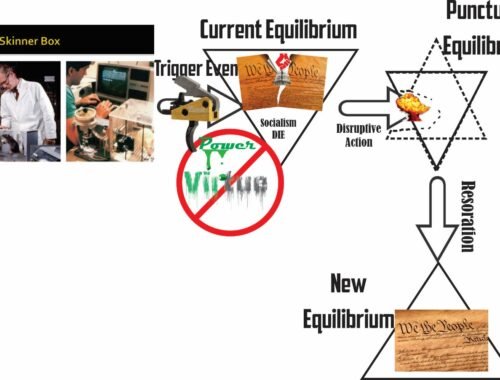
Responsibility and Accountability Part 2: Congress and Accountability
This is Part 2 of a series on accountability and responsibility. As the graphic shows, the two should work together, but can but can get jammed. But often the two are divorced, or at least separated, in this case, by the 16th and 17th Amendments to the Constitution.
The unamended Constitution diffuses responsibility and accountability across representatives and senators and places it at the institutional level. Therefore, voters can blame Congress for problems, but forgive their representatives and senators in an act of cognitive dissonance. I suspect this sped up with the 16th and 17th Amendments to the Constitution. States ratified both and placed them into effect in 1913, just before WWI.
The 16th Amendment states:
“The Congress shall have power to lay and collect taxes on incomes, from whatever source derived, without apportionment among the several States, and without regard to any census or enumeration.”
This amendment lifted virtually all spending constraints and provided Congress with a ready source of income through the new income tax, collected by the new Internal Revenue Service.
The 17th Amendment states:
“1: The Senate of the United States shall be composed of two Senators from each State, elected by the people thereof, for six years; and each Senator shall have one vote. The electors in each State shall have the qualifications requisite for electors of the most numerous branch of the State legislatures.
2: When vacancies happen in the representation of any State in the Senate, the executive authority of such State shall issue writs of election to fill such vacancies: Provided, That the legislature of any State may empower the executive thereof to make temporary appointments until the people fill the vacancies by election as the legislature may direct.
3: This amendment shall not be so construed as to affect the election or term of any Senator chosen before it becomes valid as part of the Constitution.”
The key part is paragraph 1. Pre-Amendment, the states appointed senators, and the senators represented the state and were accountable to the state. Section 3, Article 1 originally stated:
“The Senate of the United States shall be composed of two Senators from each State, chosen by the Legislature thereof, for six Years; and each Senator shall have one Vote.”
The state could recall a senator if the senator did not vote according to their policies. The senators had direct accountability to the state before the amendment, but diffused accountability after the amendment.
These two amendments were part of a power shift towards imperialism after the Spanish American War (see Power Shift, Part 4: The Spanish-American War, the American Empire, and Progressivism). They shifted power and accountability away from the states to the federal government. Congress (mis)-used this power and limited accountability to expand the government and the debt (see Can a Free Republic be a Superpower: Part 4 Toxic Debt).
The diffusion gets even more pronounced when people, organizations, and political parties contribute to elections outside of their districts and states. The representatives and senators become less beholden to their voters and more to their donors.
The education institution facilities this growth and diffused responsibility by not teaching the Declaration of Independence, the Constitution, and critical thinking. Many Americans have never read these documents, let alone understand them. Voters require accurate information and critical thinking skills to vote effectively and to understand that politicians are not leaders; they are the People’s representatives. Most not only do not understand they own the Republic, but they do also not understand the difference between a republic and a democracy and their responsibilities.
There is virtually no one to hold Congress accountable. We need to completely overhaul our education system to help voters understand:
- How their government came about and is supposed to work.
- Key issues and their impact not only today but also on tomorrow’s generations.
- How to critically analyze issues and information to make informed decisions.





